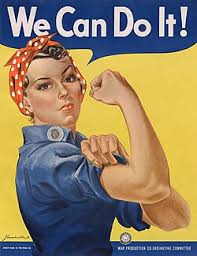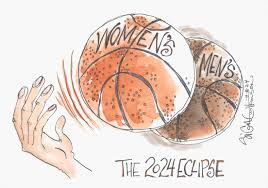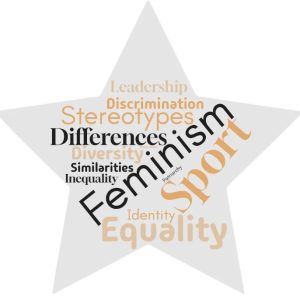1
Section One: The Fundamentals
A) What do we know about sport? What are common assumptions we make about sport and society?
| Sports Speak a Universal Language While the idea that “sports speak a universal language” is usually celebrated due to its potential to unite people across various cultures, the term may not be entirely true. Some may see sports not as a bridge but as a barrier because of socioeconomic, cultural or historical contexts. Accessibility plays a significant role in this. A number of sports require all different kinds of equipment (e.g. hockey), fees or facilities that are expensive, especially for marginalized communities. This economic barrier limits who can participate, excluding those voices that could have engaged with sports as a universal platform. Differences in culture also has an effect on how sports are perceived. In some regions, certain sports could be seen as colonial impositions instead of universal languages. For instance, cricket is very popular in India, but it carries colonial association for people of other regions, thus complicating its unifying appeal. The politics within a sports organization (discrimination or corruption), can turn people away due to feeling excluded or misrepresented. Gender inequality is another aspect of this; women’s sports typically receive less funding and media attention than their male counterparts. This highlights that sports do not effectively communicate universally across genders. Historical trauma tied to specific sports can further discourage the idea of sports speaking a universal language. For Indigenous communities, sports like lacrosse, once valued as a sacred game for their people, has been commercialized, more or less erasing its entire cultural significance. From these various viewpoints, sports may not speak a universal language but rather a fractured or broken one. The language is only embraced and understood by those who find comfort and space within its dominant narratives. Addressing these barriers is the key to sports eventually speaking a universal language. |
Exercise 3: Notebook prompt
What are some other metanarratives about sport that you are familiar with? Find an image or video clip or draw something yourself that captures this idea…
So what? Why does any of this matter? Does it matter? As something we grow up with – live with – play through – we don’t often interrogate the meanings of sport, and perhaps we don’t want to.
But being aware of these assumptions and metanarratives is especially important, I would argue, because of the centrality of sport to our everyday lives, the role that sport plays in shaping our childhood and worldviews and….. [finish that thought]
| Metanarratives About Sport
Sports are typically accompanied by powerful metanarratives (stories that shape how we value and see them). Common ones are:
These metanarratives are the shaping factor in how one grows up understanding sport and the role it has in society. But they can also oversimplify the complexity of reality. For example, the belief that success in sports rely solely on hard work and talent does not take systemic barrier into account (e.g. unequal access to resources). The unity narrative also glosses over the fact that exclusion exist, especially when considering marginalized groups. Being aware of these assumptions and metanarratives is especially important, I would argue, because of the centrality of sport to our everyday lives, the role that sport plays in shaping our childhood, worldviews, values and how one perceives another. They also have the power to challenge inequalities or reinforce them. By questioning theses assumptions, sports can be better used to promote critical thinking, fairness and inclusion.
|
B) What is social justice?
Exercise 4: Padlet Prompt
Think back to the last section and try to look at some of the ideas we discussed differently. How might sport and social justice actually co-exist?
Record any images, video clips, or gifs you added to the padlet and identify a point of intersection between sport and social justice (can be an issue or a barrier or a debate or something you would like to explore in more depth in this course) . Screenshot or paste in your response below.
| Equity and Representation
Sports and social justice can co-exist through purposeful efforts to address systemic inequities and make sure marginalized groups are properly and fairly represented. One example of this is the fight for gender equity in sports. Events like the FIFA Women’s World Cup and leagues like the WNBA show how visibility and investment can challenge gender norms and promote equality. Despite there being progress, female athletes usually face unequal pay, access to facilities and media coverage when compared to their male counterparts. By advocating for these things for female athletes, it directly ties to social justice goals. Representation can also extend to ethnicity and race. Athletes of colour, still to this day, have used their platforms and audience to combat social injustices, dating all the way back to the Olympics in 1968. From Tommie Smith and John Carlos raising their fists to more recent movements like Colin Kaepernick’s peaceful protest against police brutality. Actions like these highlight how sports can amplify calls for justice justice all while exposing systemic barriers that athletes face based on race. The Paralympics are a good example of an intersection between ability and equity. These platforms challenge stereotypes about disability and advocate for broader accessibility in both sports and society. Representation in leadership roles and debates surrounding the issue are also vital. People of colour, women, those a part of the LGBTQ+ community are still underrepresented in officiating, coaching and organizational governance. By addressing these gaps, it fosters equity and inclusion which would further align with social justice efforts. Through these lenses, sports can become an important place for promoting representation and equity, proving that social justice and sports can actually co-exist.
This figure shows Tommie Smith and John Carlos raising their fists at the 1968 Olympics.
|
C) Social Justice Reading
(note: this activity is optional!)
D) KINESIOLOGY AND SOCIAL JUSTICE
Exercise 5:
Exercise 6:
What are the implications of bodies-at-risk discourse and the refusal to understand the health gap from a social justice perspective, according to the authors of this article?
| The term “bodies at risk” looks at how certain people groups are seen more likely to have health problems due to gender, disability, race or other factors. When society labels these groups of people without considering all the factors, it leads to unfair treatment. For instance, If one thinks some people are just naturally less healthy, the real reasons behind their health issues could be ignored (e.g. facing discrimination, money problem, lacking access to good doctors, etc.,).
The authors argued that if one does not look at health differences (health gap) from a fairness viewpoint (social justice), individuals could be blamed for their health problems instead of solving and fixing the unfair systems that cause these health problems. This means not working on important solutions like making sure everyone has proper access to healthy food, proper medical care and safe places for physical activity. When social justice is not the focus, there is a risk of keeping the same unfair systems in place. This will continue to harm certain people groups. To sum it up, the authors believed that it is crucial to address and understand the larger, unfair systems that affect various people’s health. This way, a world where all individuals have the same chance to enjoy sports and be healthy, regardless of where they come from or who they are.
|
Section Two: Sport Feminism
Exercise 7: Notebook Prompt
What is feminism? What does it mean to you? Choose one of the images below and explain how it captures your understanding of feminism (or find one that does speak to you and paste this into your pressbook with an explanation of why it matters to you.

The definition of feminism, according to Google, is the advocacy of women’s rights on the basis of the equality of the sexes. To me, I look at feminism in a similar way to the definition. It is the act of one encouraging, speaking up about and tackling issues that cause discrepancies between genders. I see it as women showing the world that they could do anything they can put their mind to, regardless of the difficulty of the activity. This image pasted above was the image that jumped out to me the most out of all the pictures showed. The speech bubble of the woman saying: “We can do it!” applies to what feminism means to me. To me, it highlights that regardless of the hurdle or the challenge that a woman could face, whether it be emotionally, physically or spiritually, it can be conquered. The picture further pushes the way I feel about feminism. The way the women is posing in the image, flexing her biceps says to me that women can be strong too. Women have been generalized to be seen as softer, more gentle and more emotional than their male counterparts. But this image says to me that despite all those generalizations, they are not held to those typical stereotypes. One can do anything they set their mind to, and it should not matter what their gender is. It is almost as if the image is saying individuals should be treated equally in all aspects because women ‘can do it too,’ regardless of what ‘it’ is.
|
Exercise 8: Notes Prompt (optional)
NB: Cornell notes is a great resource that teaches effective notetaking. Unfortunately, our system can’t save notes taken in the H5P app, so this is fully optional.
Exercise 9: Crossword Activity
Exercise 10: Padlet Prompt
| Word Cloud: Ayo Onafusi
When creating my word cloud, the two words that stuck out to me the most were feminism and sport. I say this because these two words are the basis for this article. The word feminism considers every part of feminism. Whether it be feminism focused on a concept, a race, or even a sport. The word is not only a definition but a symbol of advocating for women’s rights in every aspect. The word sport is the focus of this course. How does this term or word relate to sport? What do you think is the meaning of the word sport? These are questions that are answered differently by everyone to some degree. This is because not everyone has the same experience when it comes to dealing with and interacting with sport. There were other words that came to mind as well. For example, equality and inequality. The word equality came to mind because in the end, that is the final goal of feminism, for genders to be seen as and treated as equal. Inequality also came to mind because that is the reality that we live in as of right now. As you can see from the word cloud, there were many other terms that stood out to me, but the ones mentioned here were the ones that spoke to me most.
|

|
The enthusiasm surrounding athletes like Angel Reese and Caitlin Clark shows that the landscape for women’s sports is definitely changing, but it is unclear whether this signifies a temporary or more permanent shift. Reese’s NCAA championship and Clark achieving record breaking statistics are both moments that have captured the public eye and pushed more conversation about gender equity in sports. But, inequities and societal biases still remain. Women’s sports still receives less investments, funding, sponsorship and media coverage than men’s sports. Individual athletes like Reese and Clark can spark temporary excitement and support, but for long term change, there has to be consistent funding, broadcasting deals and resources for female athletes at all levels of sport. There is some proof that people do care for women’s sports, mostly as successful marketing and visibility campaigns. These can highlight the entertainment and talent the athletes bring. Social media also gives the athlete a personal platform to engage with fans and build their own brand. To make sure this is more than a trend, systemic equity must be prioritized. Fan support, advocacy and sponsorships will be crucial in changing temporary moments of excitement into lasting progress for women’s sports.
|




